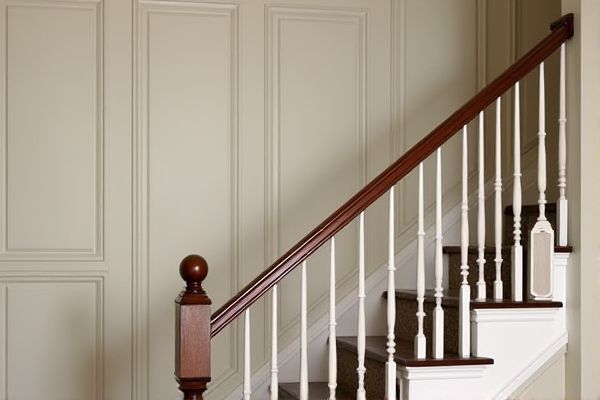
Balustrade panels offer a sleek, modern look with larger, continuous surfaces that require less maintenance compared to traditional spIndles, which provide a classic, detailed aesthetic but may need more frequent cleaning and upkeep. Discover how choosing between balustrade panels and spindles can enhance Your space by reading the full article.
Table of Comparison
| Feature | Balustrade Panels | Spindles |
|---|---|---|
| Structure | Solid, continuous panels | Individual vertical posts |
| Installation | Faster, installed as one unit | Time-consuming, each spindle installed separately |
| Safety | Higher due to fewer gaps | Standard safety; gaps between spindles |
| Design | Modern, sleek look | Traditional, classic style |
| Maintenance | Easy to clean, less dust accumulation | Requires regular cleaning between spindles |
| Cost | Generally higher upfront cost | Usually lower initial cost |
| Durability | High, less prone to damage | Potential for individual spindle damage |
| Customization | Limited to panel designs | High, various spindle shapes and materials |
Introduction to Balustrade Panels and Spindles
Balustrade panels offer a modern and streamlined alternative to traditional spindles, providing enhanced safety and aesthetic appeal for staircases and balconies. Spindles, typically slender and individually installed, create an open, classic look but may require more maintenance and installation time. Your choice between balustrade panels and spindles significantly impacts the overall design, durability, and ease of cleaning of your railing system.
Defining Balustrade Panels
Balustrade panels are pre-assembled sections consisting of multiple balusters or spindles, designed to be installed as a single unit within a railing system. They offer enhanced structural stability and faster installation compared to individual spindles, making them ideal for large projects or uniform aesthetic requirements. These panels often feature materials like wood, metal, or composite, customized to fit residential or commercial balustrade applications.
What Are Spindles in Balustrading?
Spindles in balustrading are narrow, vertical posts that support the handrail and provide safety and aesthetic appeal to staircases and balconies. Typically made from wood, metal, or composite materials, spindles are spaced evenly to prevent falls while contributing to the overall design style, ranging from traditional to modern. Balustrade panels offer a solid or decorative alternative, but spindles remain popular for their classic look and customizable patterns.
Aesthetic Differences: Panels vs Spindles
Balustrade panels provide a sleek, modern aesthetic with clean, continuous surfaces that create a minimalist and contemporary look, while spindles offer a traditional and detailed design featuring vertical rods that enhance architectural character and charm. Your choice depends on the desired visual impact: panels emphasize uniformity and simplicity, whereas spindles emphasize texture and craftsmanship. Both options influence light flow and spatial perception, with panels often making spaces feel more enclosed and spindles allowing more openness and visibility.
Material Options for Panels and Spindles
Balustrade panels offer versatile material options including glass, metal, and composite wood, providing durability and modern aesthetics, while spindles are commonly crafted from wood, metal, or wrought iron, emphasizing traditional and intricate designs. Glass panels in balustrades enhance visibility and light flow, whereas wooden spindles deliver warmth and classic appeal in staircases and balconies. Metal spindles often provide robust structural support and customizable designs, contrasting with composite or metal panels that are low-maintenance and weather-resistant for outdoor use.
Safety Considerations: Which is Safer?
Balustrade panels offer enhanced safety by providing a continuous barrier that prevents small children and pets from slipping through gaps, unlike spindles which can have spaces wide enough for accidents. Your choice of balustrade panels often meets stricter building codes and can better withstand impact, making them a safer option for homes and public spaces. Spindles, while traditional, may require closer spacing and regular maintenance to ensure ongoing safety compliance.
Ease of Installation and Maintenance
Balustrade panels offer a streamlined installation process, often requiring fewer components and less alignment compared to traditional spindles, which must be individually measured and spaced. Maintenance is simplified with panels since they typically have fewer crevices and are easier to clean, reducing the accumulation of dust and debris common in spindle designs. Your choice between balustrade panels and spindles can significantly impact the time and effort needed for both installation and ongoing upkeep.
Cost Comparison: Balustrade Panels vs Spindles
Balustrade panels typically cost more upfront than individual spindles due to their larger size and pre-assembled design, which reduces installation time and labor expenses. Spindles are usually less expensive per unit but require more time and skill to install, increasing overall labor costs. Considering both materials and labor, balustrade panels often provide better value for projects emphasizing faster installation and uniform aesthetics.
Choosing the Right Style for Your Property
Balustrade panels offer a sleek, modern aesthetic with easy installation and low maintenance, ideal for contemporary properties seeking a seamless look. Spindles provide a classic, customizable design that suits traditional or vintage homes, allowing for intricate detailing and varied materials. Selecting the right style depends on your property's architectural character, desired maintenance level, and overall design theme.
Conclusion: Which Balustrade Solution Is Best?
Balustrade panels offer a sleek, contemporary look with ease of installation and low maintenance, ideal for modern architecture and large-scale projects. Spindles provide a traditional, customizable aesthetic that allows for intricate designs and enhanced ventilation, suited for classic homes and detailed craftsmanship. Choosing between panels and spindles depends on the desired style, budget, and maintenance preferences, with panels favored for efficiency and spindles for decorative versatility.
 homyna.com
homyna.com